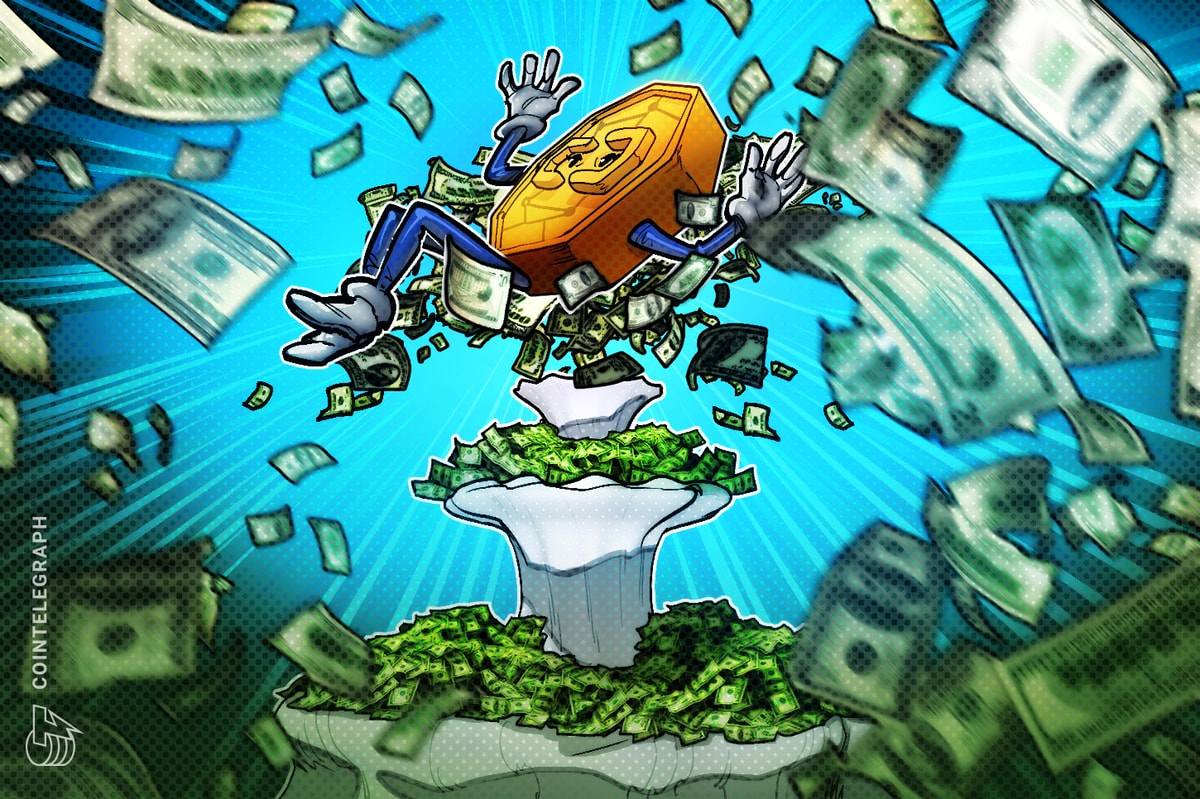
Conviction that Bitcoin and an honest monetary system are fundamental to freedom can inspire cooperation between unlikely partners.
In the same way that a year passes through a series of seasons, so too does Bitcoin appear to follow a seasonal trajectory during each halving cycle.
As we enter Bitcoin Spring, price discovery and growth within this industry will begin to accelerate as Bitcoin begins to draw more interest from people outside of the community. However, growth within the industry is not the only growth to be had. In the same way that the flowers of springtime must contend with weeds, so too must Bitcoiners contend with new rounds of FUD.
The latest individual of merit to publicly weigh in on Bitcoin is Logica Chief Strategist Michael Green. Green is a wealth of knowledge in the macro sphere and his interviews are always worth a listen, even if you don’t agree with him. That being said, I have a few points of contention with him because I believe he is speaking about Bitcoin from a position of bad faith and not a position of someone who generally wishes to learn and understand.
To begin with, he styles himself as open minded and has said time and again that it is important to listen and understand ideas with which you don’t agree. For example, he will be interviewing, or perhaps has already interviewed, Rohan Grey, which means that the merits of Modern Monetary Theory (MMT) will also be entertained. That is all good and well, however, it also appears clear that the same level of consistency on Green’s part will not be extended to the Bitcoin space.
This is evidenced by his use of cliche and banal pejoratives to describe bitcoin such as: Bitcoin is a fake system, Bitcoin is trapped in a lie, Bitcoin is a Ponzi, “bit con,” or comparing Bitcoin to Bernie Madoff. And yet, none of these claims are supported by any evidence on his part. Based on the many hours I have spent listening to podcasts of his, I think he would agree that making disparaging remarks prior to presenting evidence is a dangerous path to tread on.
I am not sure whether Green is wading into the space as a form of self-advertisement (his follower count has increased significantly since he began talking about Bitcoin), to protect the current system (himself?) or because he genuinely thinks there is something wrong with Bitcoin. His true intentions, whatever they may be, are immaterial to this discussion.
This article is not being written to attack Green’s character but is instead being used to refute some of the claims he made on the “Money MBA Podcast.” The list of his claims against Bitcoin that we will address include the following: money exists to extinguish debt, the inelasticity of Bitcoin is a problem, and Bitcoin disincentivizes risk taking. I would also like to add that, while you read this, it is important to keep in mind that these claims work off of Green’s position that we shouldn’t abandon the current system. This is the same system that Green benefits from despite an increasing number of participants falling by the wayside. One might go on to surmise that there is a hint of self interest behind his positions.
Nevertheless, the important principle here is that we must always be ready to meet challenges coming from outside of the space, which is the purpose of this article. Before we respond to the claims against Bitcoin, we must first challenge Green’s claim about the nature of money itself.
Money Exists To Extinguish Debt
The first point that needs to be addressed is the claim that “money is that which extinguishes debt.” This claim is demonstrably false. The primary reason that money came about was to solve the double coincidence of wants problem. An explanation and example of the double coincidence of wants problem is provided by Vijay Boyapati:
“In the earliest human societies, trade between groups of people occurred through barter. The incredible inefficiencies inherent to barter trade drastically limited the scale and geographical scope at which trade could occur. A major disadvantage with barter based trade is the double coincidence of wants problem. An apple grower may desire trade with a fisherman, for example, but if the fisherman does not desire apples at the same moment, the trade will not take place.”
Money solved this problem by creating a mechanism by which both goods from the example could be priced in a third. This pricing mechanism provided the lubricant that allowed the size and scope of trade to expand. By finding a salable good that all other goods can be priced in, ancient man stumbled upon one of the most important technological innovations, arguably, of all time. Since taking on debt in the first place was rare in ancient times, then how could money, which has been widely adopted and used going back as far as we can decipher, have existed solely for the purpose of extinguishing debt? The answer is clear: Money did not exist to extinguish debt but was instead used to facilitate trade.
Although debt financing has evolved in size and scope over time, it has always existed within the context of a system which used the scarcest goods as money, whether those were bronze, copper, silver or gold. One might be correct in saying the U.S. dollar exists to extinguish debt, but only because we have operated solely under a debt-based monetary system since 1971. Under this system, the bank simply conjures up an asset (dollars) from thin air and loans it into existence, perhaps in the form of a mortgage or car loan. Historically speaking, this is the exception and not the rule. A hard money system has allowed for debt financing as far back as records exist. The only difference is that some form of collateral, usually land, had to be pledged in order for a loan of hard money to be obtained so that the creditor was protected in the case of the borrower's default.
Debt-based money was used in the 1800s and to great detriment. The onset of numerous banking panics during this century was the direct result of banks increasing the money supply via unbacked banknotes. The way this works is banks would create more banknotes (which are actually just the receipts you would have received after depositing gold at the bank) than they had gold in their vaults, in effect loaning banknotes into existence.
My last comment under this topic that I would like to make is that during his interview with the “Money MBA Podcast,”Green cited the character Wimpy from “Popeye” in order to make his point that money exists to extinguish debt. It must be noted, however, that in the case of Wimpy, he does not have money to begin with and is thus looking for an extension of credit, so I am not exactly sure what Green was driving at there. An extension of credit and money are two separate things. One is an IOU, while the other is not. If Wimpy ever had money, no debt would enter the equation because a straight swap of hamburgers for money would have occured. Money is produced, and behaves, no differently than any other good in an economy and is not debt in and of itself.
Now that we have addressed some key misconceptions about the nature and role of money itself, we are ready to move forward and address some of Green’s arguments against Bitcoin itself.
The Bitcoin Money Supply Is Inelastic and Cannot Expand
The next claim made by Green against Bitcoin is that the money supply of Bitcoin is inelastic and therefore cannot expand, which would be detrimental to the economy. His belief appears to be that the elasticity of money is necessary for growth in a modern economy, despite history indicating to the contrary. To counter his claim, we will need to analyze time periods characterized by both elastic and inelastic money and then focus on the effect that each type of money had on the economic environment.
Periods Of Elastic Money
After the fall of the Roman Republic, and subsequent rise of the Roman Empire, debasement of coins began shortly thereafter with the size and frequency of debasements increasing over time. By the year 241 A.D., the denarius had been diluted to just 48 percent of its original silver content and then, by 274 A.D., contained a meager 5 percent of said silver content. It should come as no surprise that debasement of Roman coins coincided with the decline and collapse of the empire itself.
The collapse of the western part of the Roman Empire led to a period of time called the Dark Ages, which was a time of economic and political weakness in Europe that lasted for centuries. This entire post-Empire period suffered from the rampant debasement of coins, however, it must be noted that the shorts periods of relief came once inelastic money was introduced, such as Charlamagne’s denier or the Byzantine and Arab gold coins. These short periods marked by the use of inelastic money were also periods of economic growth in an otherwise low-growth era.
In China, paper money had been used to varying degrees, beginning in the 7th century, and was initially backed by copper. As with the evolution of any paper money, its lifecycle passed along these four key phases:
1. A banknote is provided as a receipt for deposits of copper
2. Due to the lightweight nature of the banknote, the banknotes themselves begin to be used as a proxy for money
3. Governments/bankers then begin to issue more banknotes than they have precious metal in the vault
4. Inflation follows which leads to a collapse of the paper currency
In the case of China, the final collapse occurred in 1368, while under the Mongol-led Yuan Dynasty, after a period of high inflation.
During the 18th century, France experienced one of history’s most well documented bubbles followed by one of history’s greatest periods of hyperinflation near the end of the century. The Mississippi Bubble occurred in the 1710s and was fueled by the excess creation of bank notes on top of gold deposits, which were then used to buy shares in the Mississippi Company. The inflation of the money supply led to a bubble which subsequently burst, leading to riots. John Law, head of Banque Royale, was eventually forced to flee under cover of night, with his own personal real assets staying behind in an effort to make creditors whole. At the end of the century, during the 1790s, the French had yet to learn their lesson and the assignat was born out of the madness of the French Revolution.
The assignat was made legal tender and allegedly derived its value from the church lands that had been confiscated by the revolutionaries. Suffice to say, land itself is not a good form of money as it lacks the attributes of portability and divisibility. As is always the case, the value of the assignat, like the paper money experiments that preceded it, was destroyed due to over-issuance. This over-issuance fueled even more chaos, during an already tumultuous time, until Napoleon took control in a coup and restored the country to a more inelastic money (gold).
The Bretton Woods system, established in 1944, was by no means a good system but it at least anchored the dollar to a resource, gold, that mimicked the scarcity of the Earth’s resources. Prior to the Bretton Woods system, the world had witnessed the destruction of German paper money during the Weimar hyperinflation and after the Bretton Woods system was abolished, the world has seen the destruction of paper currencies such as the Brazilian cruzeiro, Zimbabwean dollar and Venezuelan bolívar. In fact, an individual on Reddit was kind enough to make an infographic of all the elastic currencies throughout history that have been inflated away, many occuring in the 20th century.
Today, countries such as Argentina, Brazil, Turkey and many others watch helplessly as the purchasing power of their elastic currencies is destroyed. Perhaps it should come as no surprise that those are three of the countries that have seen significant growth within the Bitcoin ecosystem.
On an anecdotal note, I have watched a close friend in Brazil benefit enormously from having owned bitcoin while the Brazilian real has continued to depreciate. In fact, though his family's business has come under difficult times, the family’s allocation to bitcoin has helped them weather the storm while others in their same situation aren't so lucky. Friends of his who have no interest in the topic of money have since joined in as well and benefitted accordingly.
Lastly, I would like to provide some evidence as to what happens under an elastic money regime courtesy of Pew Research. In 1970, one year before Nixon closed the gold convertibility window, we had the following shares of U.S. aggregate household income by income tier: upper income (29 percent), middle income (62 percent) and lower income (10 percent).
By 2018, those percentages had changed to record the following: upper income (48 percent), middle income (43 percent) and lower income (9 percent). What this illustrates is that periods of elastic money have a tendency to exacerbate wealth inequality to a significant degree. There are also additional sources of information that substantiate this point, but the key takeaway here is that elasticity of the money supply leads to debasement and debasement is ultimately theft, or in the case above, a transfer of wealth from the poor to the wealthy.
Periods Of Inelastic Money
History has shown that periods of inelastic money were superior to periods of elastic money, whether it was the gold aureus issued by Caesar, the gold solidus used in Byzantium, the florin or ducat of northern Italy, these functioned as early European reserve currencies, or the money used during the time of the international gold standard, beginning in 1871.
All of the aforementioned periods were some of the most productive periods in human history. From the Renaissance to the Industrial Revolution, the inelasticity of money was the key feature that allowed immense amounts of growth to transpire. The inelasticity of money is important because we operate in a world of scarcity where the goods used as money must mimic this finite nature. Resources such as land, gold, oil, timber and water are finite, so pricing them in an infinite good does not make much sense, philosophically speaking. Furthermore, resources must be expended in order to extract other resources or produce goods. Bitcoin adheres to both of these laws of nature due to its scarcity as well as the need to expend resources to produce it while fiat money does not.
Bitcoin Disincentivizes Risk Taking
The last claim that we will cover in this article is the claim that Bitcoin disincentivizes risk taking.
As financial markets have evolved, there has been a corresponding proliferation of debt instruments as well. The majority of these developments in debt markets occurred under a hard money system, so the argument that Bitcoin disincentivizes risk taking, ostensibly due to its high value, is false.
Even though debt wasn’t as common during ancient Greek or Roman times, purchases of land and sea voyages were sometimes financed through debt. Typically, a precious metal was loaned out to the borrower and in exchange the borrower would pledge security, in the form of the land being purchased or even in the form of the sea vessel being used for the voyage itself. Therefore, risk taking was present even under an ancient, hard money system.
In late medieval times, Florentine banks saw fit to risk a loan to the English king, Edward III, during the Hundred Years’ War. These bankers were ultimately bankrupted when Edward defaulted but nonetheless, this is another example of credit being issued in the form of a hard money good (likely the highly-valued florin, in this case) and risk being taken. The point of these examples is to show that risk taking has only increased with time and that the loans denominated in highly-valued money were not impediments to commerce.
Loans in general are repaid through careful investments into efficiency-creating technology which frees up capital, allowing repayment of the loan. For example, in the latter decades of the 19th century, John D. Rockefellers’ Standard Oil was able to reduce the prices on its petroleum-based products to one-eighth of their original price.
This cost efficiency would have no doubt enabled Standard Oil to repay any of its outstanding creditors with ease. It is also no surprise that this efficiency occurred under the inelastic international gold standard previously mentioned. Much to the contrary, debt today is often rolled over and never repaid under our current elastic monetary regime. The mere fact that debt continues to expand should tip people off that the current system is untenable. It is also worth noting that if people would prefer to save in bitcoin rather than lending it out, then perhaps their risk assessment of the economic environment is one where alternatives to holding bitcoin are poor by comparison. This has nothing to do with the monetary unit itself, but with the economy.
Lastly, Green made a comment that those unable to pay their debts were thrown into debtors’ prison, often for indefinite periods of time, according to him. The first thing that needs to be noted is that unpaid debts are a form of theft by the borrower. When people engage in theft of resources under any other circumstance, it is a criminal offence and often leads to prison time. Should debt be treated differently? If so, how? If anything, the risk for the creditor of not being made whole, in the event of the borrowers default, would be a perfect example of a circumstance that would disincentivize risk taking, rendering the monetary good being lent out as immaterial in this case. In the case of Bitcoin, despite the nascency of the technology, there are already opportunities for lending and borrowing, for example by opening an account through BlockFi, so the claim that Bitcoin disincentivizes risk taking is false.
Conclusion
Over the duration of the podcast, Green went on to make additional comments such as “Bitcoin is unfair,” but as with most of his claims, he did not go through much trouble to explain himself, so the ultimate thinking behind them is unknown to the listener. Additionally, he referred to the stock-to-flow model as “nonsense” but provided no evidence to support that claim either. As someone who enjoys listening to Green outside of Bitcoin, I expected much more. His audiences have a tendency to fawn over him, so it comes as no surprise that his claims were left unchallenged.
As far as providing a solution to the monetary mess we find ourselves in, his response was simply to “vote better.” Again, I expected far more. A quote often ascribed to Einstein provides the best response to Mike’s solution:
“The definition of insanity is doing the same thing over and over again and expecting a different result.”
There is no need to open a tangential discussion on the topic of democracy within the context of this article, but it is enough to say that if democracy worked so well, then why do places like Argentina, Brazil and Kenya find themselves in a consistent state of dysfunction?
In closing, people struggle with paradigm shifts and understandably so, however, it is my perception that Green is not acting in good faith in these debates, perhaps because Bitcoin does not comport with his worldview or perhaps because he is salty for having missed the boat when the opportunity arose.
Whatever the case, his use of statist rhetoric to attack Bitcoin undermines any constructive analysis he might otherwise lend to the space. Perhaps Bitcoin threatens his business model, much like Peter Schiff’s, though it is difficult to say. Conjecture aside, I do want to be clear about one thing: Bitcoin critiques are always welcome, but please, do your homework first or at least approach the subject with an open mind. Ultimately, any critiques, whether substantive or not, will only serve to strengthen Bitcoin in the long run.
This is a guest post by Kent Polkinghorne. Opinions expressed are entirely their own and do not necessarily reflect those of BTC Inc or Bitcoin Magazine.









